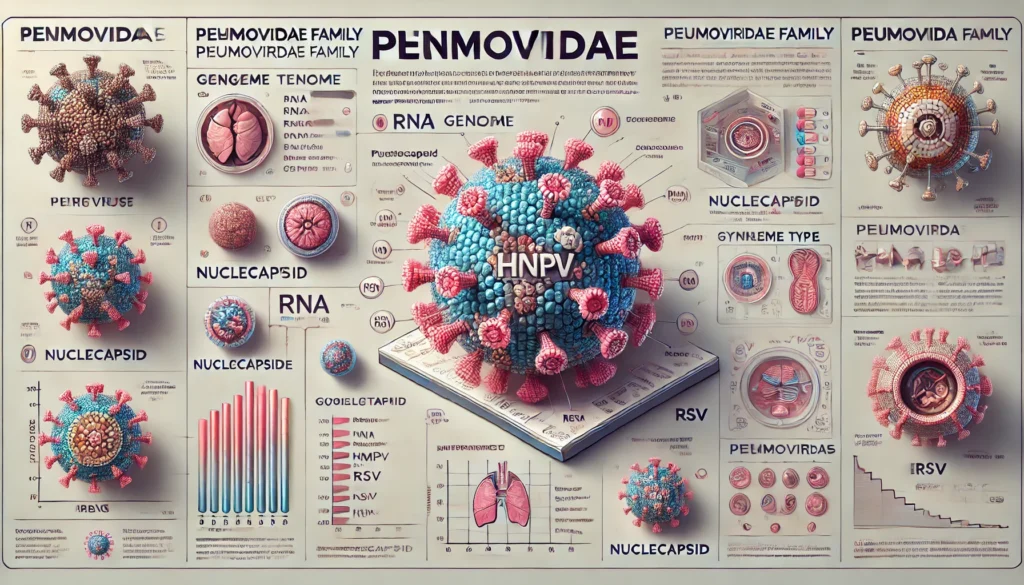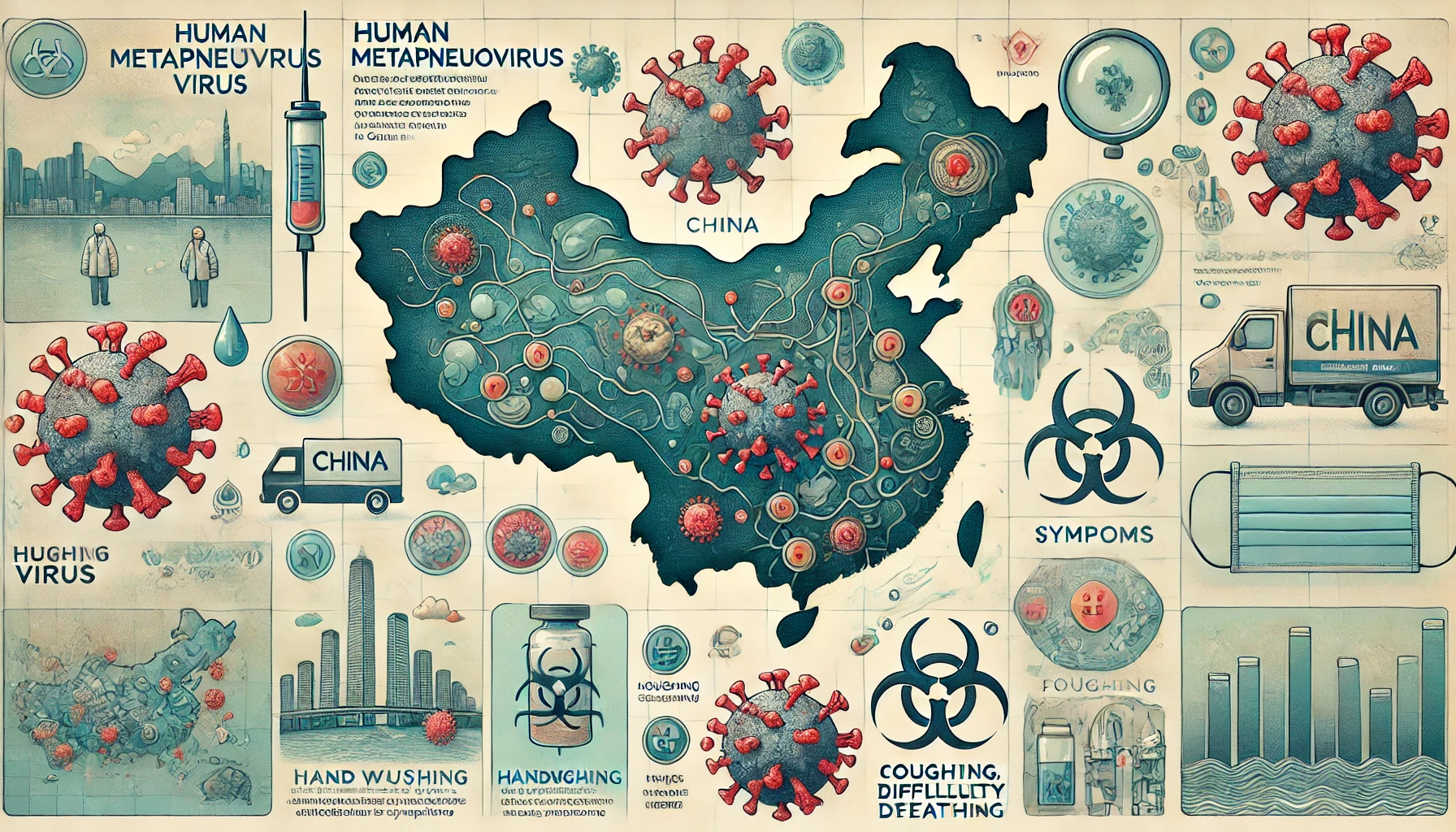China is currently facing a significant surge in respiratory illnesses, and Human Metapneumovirus (HMPV) has become a prominent name in the conversation. If you’ve been keeping an eye on the news or simply worried about emerging health threats, let’s break this down in a way that’s easy to understand and gives you the key takeaways.
What Exactly is HMPV?
Think of HMPV as a respiratory virus that’s not exactly new but is making headlines now. First identified in 2001, it’s part of the Pneumoviridae family and has close ties to the better-known RSV (Respiratory Syncytial Virus). HMPV mainly targets the respiratory system, causing symptoms that can range from a mild cold to severe breathing difficulties. This is especially true for young kids, older adults, and anyone with a weaker immune system.
Scientific Details:
- Genome: HMPV is a negative-sense single-stranded RNA virus.
- Subtypes: There are two major genotypes, A and B, further divided into subgroups A1, A2, B1, and B2.
- Replication: The virus replicates in the cytoplasm of infected cells, primarily affecting epithelial cells of the respiratory tract.
Why is Everyone Talking About HMPV in China?
Reports coming out of China highlight a sharp rise in HMPV cases. Hospitals are seeing more patients, particularly those who are more vulnerable, like young children and the elderly. While respiratory illnesses tend to spike in colder months, the sheer volume of HMPV cases has health officials paying close attention.
Key Factors Behind the Surge:
- Population Density: High-density urban centers in China facilitate rapid virus transmission.
- Post-Pandemic Immunity Gaps: With reduced exposure to respiratory pathogens during COVID-19 lockdowns, population immunity to other viruses like HMPV may have decreased.
- Seasonality: Cold weather creates ideal conditions for respiratory viruses to thrive.
HMPV and COVID-19: Are They Alike?
You’re not alone if the mention of another respiratory virus immediately makes you think of COVID-19. Here’s why people are drawing comparisons:
- Similar Symptoms: HMPV and COVID-19 both target the respiratory system, leading to symptoms like coughing, fever, stuffy noses, and difficulty breathing. Severe cases of both can escalate to pneumonia.
- How They Spread: Just like COVID-19, HMPV spreads through respiratory droplets (think coughing or sneezing), direct contact, or touching surfaces that have the virus on them.
- Who’s Most at Risk?: The elderly, kids, and people with existing health conditions are the most vulnerable.
- Seasonal Patterns: HMPV infections tend to rise during the winter months, much like COVID-19 did during its seasonal peaks.
Comparison Chart:
| Feature | HMPV | COVID-19 |
| Virus Family | Pneumoviridae | Coronaviridae |
| Genome Type | RNA (negative-sense) | RNA (positive-sense) |
| Vaccine | Not available | Available |
| Long-Term Impact | Not well-documented | Long COVID observed |
| Mortality Rate | Lower | Higher in initial waves |
So, What’s Different About HMPV?
While there are similarities, HMPV isn’t the same as COVID-19. Here are the key differences:
- Different Virus Families: COVID-19 is caused by the SARS-CoV-2 virus, a coronavirus, while HMPV is from a completely different family—Pneumoviridae.
- Severity Levels: The global impact of COVID-19—with its severe cases, long-term complications, and high mortality rates—is far greater than what we’ve seen with HMPV. HMPV cases are generally less life-threatening.
- Treatment and Prevention: COVID-19 has vaccines and antivirals, while there’s no specific vaccine or direct treatment for HMPV yet. Doctors mainly focus on relieving symptoms when treating HMPV.
- Long-Term Effects: COVID-19 has been linked to lingering symptoms (long COVID), whereas HMPV’s long-term impact hasn’t been well-documented.

How Can You Stay Safe?
If you’ve gotten used to COVID-19 precautions, you’re already ahead of the game. These measures work just as well for HMPV:
- Wash Your Hands: Frequent handwashing with soap can stop the spread of germs.
- Wear Masks: Especially in crowded places or during flu season.
- Disinfect Surfaces: Keep your surroundings clean, particularly areas that get touched a lot.
- Keep Your Distance: Avoid close contact with anyone who’s unwell.
- Stay Updated on Vaccines: While there’s no HMPV vaccine, staying current with flu and RSV shots can help reduce the overall burden on your immune system.
Why Should the World Care?
The rise in HMPV cases is a wake-up call. It’s a reminder that respiratory viruses aren’t going anywhere and that we need to stay prepared. Investing in research, improving vaccines, and boosting global surveillance systems are critical steps in staying ahead of the next big health challenge.

For Competitive Exams:
- Virus Families: HMPV (Pneumoviridae) vs COVID-19 (Coronaviridae).
- Symptoms: Common cold-like to severe respiratory distress.
- Vaccines: None for HMPV yet.
- Impact: Focus on vulnerable populations and healthcare preparedness.
Final Thoughts
As China battles this surge, it’s clear that HMPV, while not as dangerous as COVID-19, is still a serious concern. Staying informed and proactive is the best way to protect yourself and your loved ones. Remember, simple steps like handwashing and wearing a mask can make a big difference. Let’s keep learning and staying prepared—because health truly is wealth.
Key Takeaway: Whether it’s HMPV or another virus, understanding the science and staying updated can help us face health challenges head-on.
Related Articles :



